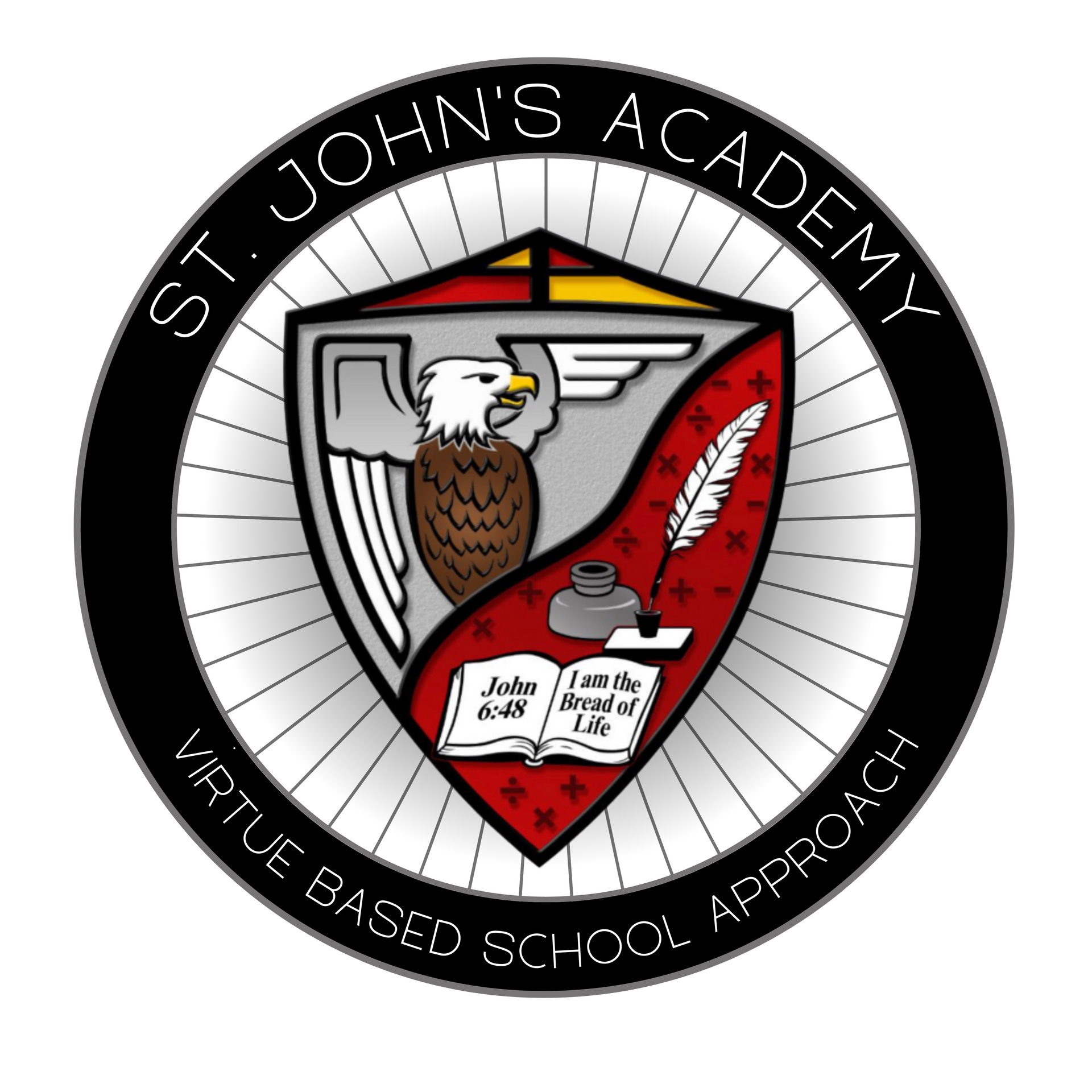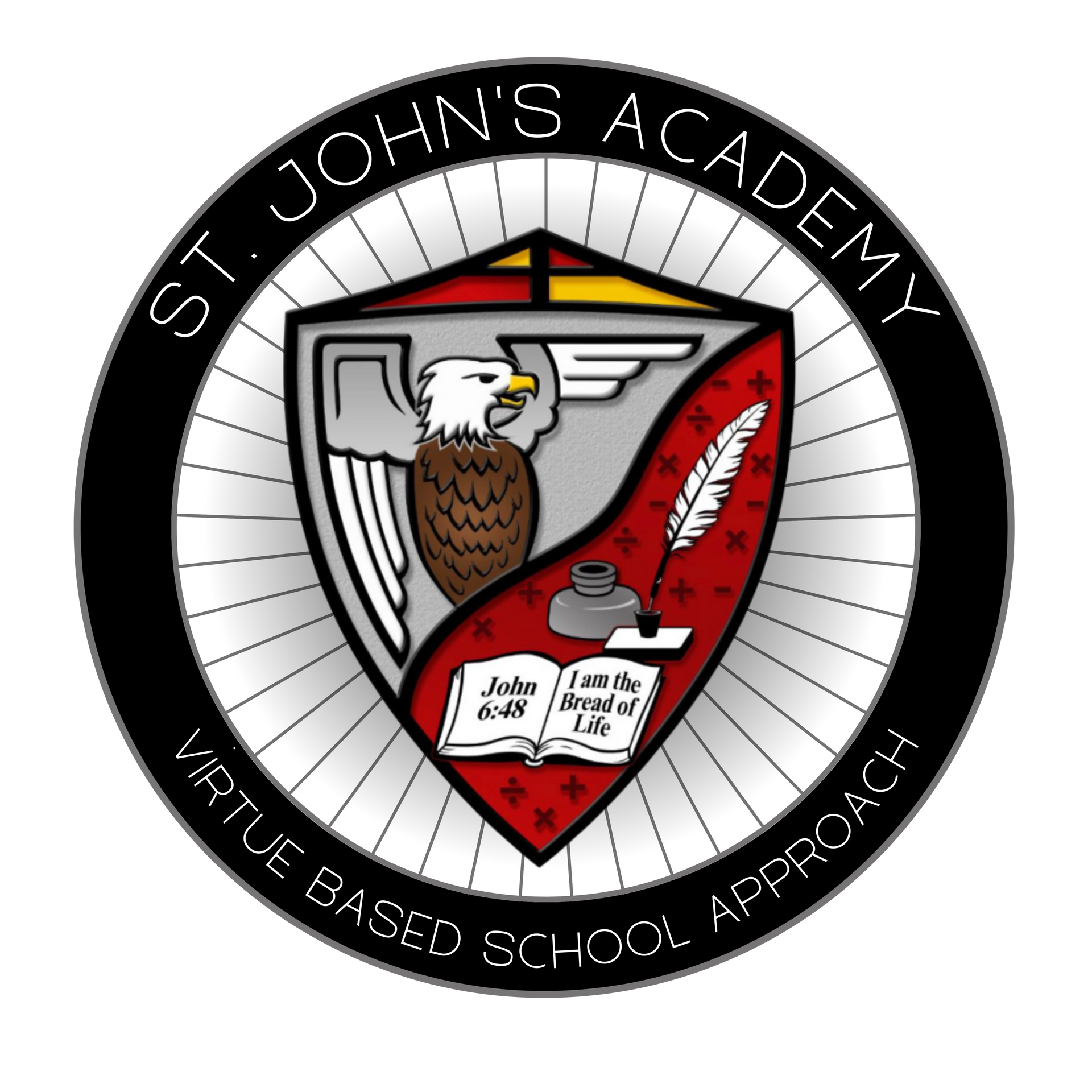Getting to Know St. John's Academy
Demographics
St. John’s Academy is located in Jamestown, ND, which has a population of around 15,000. English is the primary language spoken in this rural community. Only 12.7% of the community residents are Catholic, and 34.5% are Lutheran.
The school has a staff of 35 + employees. There are 17 full-time classroom teachers, 2 paras, and 3 administrative positions. The school serves both Catholic and non-Catholic students of all economic, ethnic, cultural and national backgrounds.
Governing Authority
St. John’s Academy’s head leadership position is the Pastor of St. James Basilica. The administrative staff consists of the Principal, Vice Principal, and Dean of Students.
An advisory School Board sets policy and formulates the budget under the ownership of St. James Basilica and the Diocese of Fargo. The SJA School Board consists of 12 members (including the principal and pastor.) These members are elected for a 3-year term.
The SJA PTO is made up of 19 committee members. The purpose of St. John’s PTO is to unite the efforts of parents and teachers in working out the common challenges of education and to assist the school by voluntary service and financial help. Membership is open to all fathers, mothers, and guardians of the pupils of St. John’s Academy and the members of the faculty.
Vision, Mission, and Values
Vision: To become recognized in our region as an institution that forms the whole child through an authentic Catholic education based on the teachings of Jesus Christ and His Church and is distinguished in instruction and learning.
Mission:
St. John's Academy provides academic excellence in a Catholic environment to inspire lives reflective of the Gospel.
Philosophy of Education
St. John’s Academy is a Catholic school providing regular academic programs for preschool through grade eight. Staffed by dedicated teachers who are fully certified in the state of North Dakota, the curriculum covers all requirements needed at the elementary/middle school level to meet state accreditation. St. John’s Academy offers a holistic approach to education in which the Gospel message is not only taught but lived. Staff and students, parents, and parishioners work together to foster the educational and spiritual development of children in an environment infused with Christian social and moral values. In a welcoming and caring atmosphere, this community is committed to academic excellence, cooperative learning experiences, and the development of good character. Students are provided opportunities to develop a life of prayer, responsibility, respect for all, and service reflective of the Gospel. St. John’s students prepare to meet daily challenges with Jesus’ vision for a better world.
Curriculum
St. John’s Academy prides itself on rigorous academics. We strive for our students to have a firm grasp on the content for all subjects, including religion, language arts, mathematics, social studies, science, library skills which include technology instruction, music, and physical education. Lessons are scaffolded and curriculum is carefully implemented to meet students at their individual levels so that each learner is equipped to reach their full potential. Additional learning opportunities have been added with the addition of our STEM Lab and new STEM classes in the middle school. SJA pushes beyond this, helping students to develop problem solving skills and a love of learning that will take them well past their years at our school.
Our students have excellent access to technology with our computer lab and student iPads. In K-4 each classroom has a set of 10 iPads and grades 5-8 have a 1:1 iPad to student ratio. All classrooms are equipped with Smartboards that are utilized to facilitate engaging lessons for our students.
We reach beyond course content and make a concerted effort to help our students understand and develop strong religious and moral values. Our commitment to our Virtue program, daily prayer (morning, mealtime, end of day), classroom priest visits, regular religious services including Mass, reconciliation, and Adoration, and our middle school Servant Leadership class helps our students to learn how to keep God present throughout their day. Students are involved in special occasion religious experiences, also. Celebrations for Grandparents’ Day, First Reconciliation, First Communion, Confirmation, All Saints Day, Advent, Christ-centered Christmas activities, Lenten activities, Easter celebrations, and May Crowning encourage all members of our school community (students, staff, families) to praise and worship God together.
SJA students excel in public speaking and are actively involved in reading, presenting, and speaking to large groups throughout their enrollment. Middle school speech contests and the 8th grade graduation exit speech require students to make connections between the religious values they have learned and their everyday life. The vast experiences that our students have in this area are recognized when our students join their peers in the public school regardless of when that may be.
Classroom Instruction
Classroom instruction is designed to be engaging and challenging for our students. Students receive time with a variety of instructional methods from individual work with teachers and small group activities to lecture-based note taking prep for high school and beyond. Differentiated Instruction is one of the keys to academic success at St. John’s Academy. With access to our Title teacher, students that qualify for services receive instruction one-on-one and in small groups.
Students who have been evaluated and diagnosed with specific learning, speech, and language differences have individualized plans for instruction. They meet with learning specialists on a one-on-one basis.
Our administrative team implemented the ELEOT system of observation during the spring of 2023 to help evaluate and identify ways in which our students can be more engaged in the learning process in each classroom. This is in the infancy stage of implementation.
Our goal is to teach the whole child. How best to do that requires continuous evaluation, ongoing professional development, and reflection. Our primary teachers are actively striving to incorporate the science of reading. This refers to a body of research from the fields of education, cognitive psychology, developmental psychology, and neuroscience. This research explains how individuals learn how to read and best practices for reading instruction.
Personnel Management
Our teaching staff are hired based on their professional training and knowledge, sincere interest in student success, expertise, and a strong faith life. Teachers go through an evaluation each year via a 3-tier system. Tier 1 is for teachers completing their first and second years of teaching at St. John’s Academy. Tier 2 consists of an annual formal evaluation for teachers completing their third, fourth, and fifth years of teaching. Teachers who have six or more years of teaching are in Tier 3. Tier 3 has a 3–year rotation; self-evaluation, peer evaluation, and formal evaluation. Teacher mentors are assigned to new staff.
Professional development opportunities are supported for our staff. Staff members are expected to attend many of these throughout the year. All teachers attend an annual Catholic School Teachers’ Convention which is held one day each year and meet for an afternoon each month provided by an early-out schedule built into our calendar. Teachers are also able to attend conferences throughout the year. These provide additional learning opportunities not only for the attendees but also for the rest of the staff as conference attendees are expected to share information with the staff.
Our teachers have been arranged into teams to allow them to have time to work together to problem solve within their groups of close-aged students. These groups meet on a regular basis and there is a hierarchy followed to make communication with the principal most fruitful.
Learner Performance
All students from K-8 take the NWEA Map test in the fall, winter, and spring. We added the winter test to our schedule in the 2023-24 school year. Our test results show that SJA students perform at 82% in mathematics and 86% in reading; these percentages are from an average of the school scores K-8 from the 2015-16 school year to present. Teachers are expected to use test results to drive instruction. Students needing accommodation with text to speech or separate testing environments are able to receive this help.
Our testing over the last 3 years shows that our overall school performance has declined since the COVID epidemic. We implemented a new mathematics curriculum in the 2022-23 school year; we anticipated some adjustment to show in our test scores.
St. John’s Academy Continuous Improvement Plan
All staff at St. John’s Academy were involved in identifying the Academy’s strengths, challenges, and opportunities for improvement. Using these findings, the Leadership Team identified the following 3 areas for improvement initiatives:
1) Enhanced collection and analysis of student data to drive instruction. Standardized tests are administered three times per school year to monitor student growth. Mid-year data will be analyzed to assess student progress, providing ample time to reteach and revise instruction to meet academic goals. Teachers and administrators will receive data analysis training and time deliberately scheduled to review data and formulate goals for students.
2) Complete vertical alignment for curriculum from preschool to grade 8. Staff will need to create a grade-level priority standards list. Reviewing standards, the Academy should identify the most important content to be covered for each grade. At the completion of this process, staff will come together to verify that curriculum and instruction aligns vertically to ensure that learning objectives are being met. **Math alignment was completed in the 2023-24 school year.
3) Enhanced professional learning that is student-centered, equipping teachers to better address the diverse needs of learners. Increases in resources, time, and commitment to the intentional formation of a targeted professional learning plan that focuses on student outcomes is needed. Collaboration and data analysis is necessary to identify areas of need as it pertains to ongoing professional learning for the development of this plan.

